Wealthy L.A. philanthropists loosen grip on donations, shifting money toward social justice
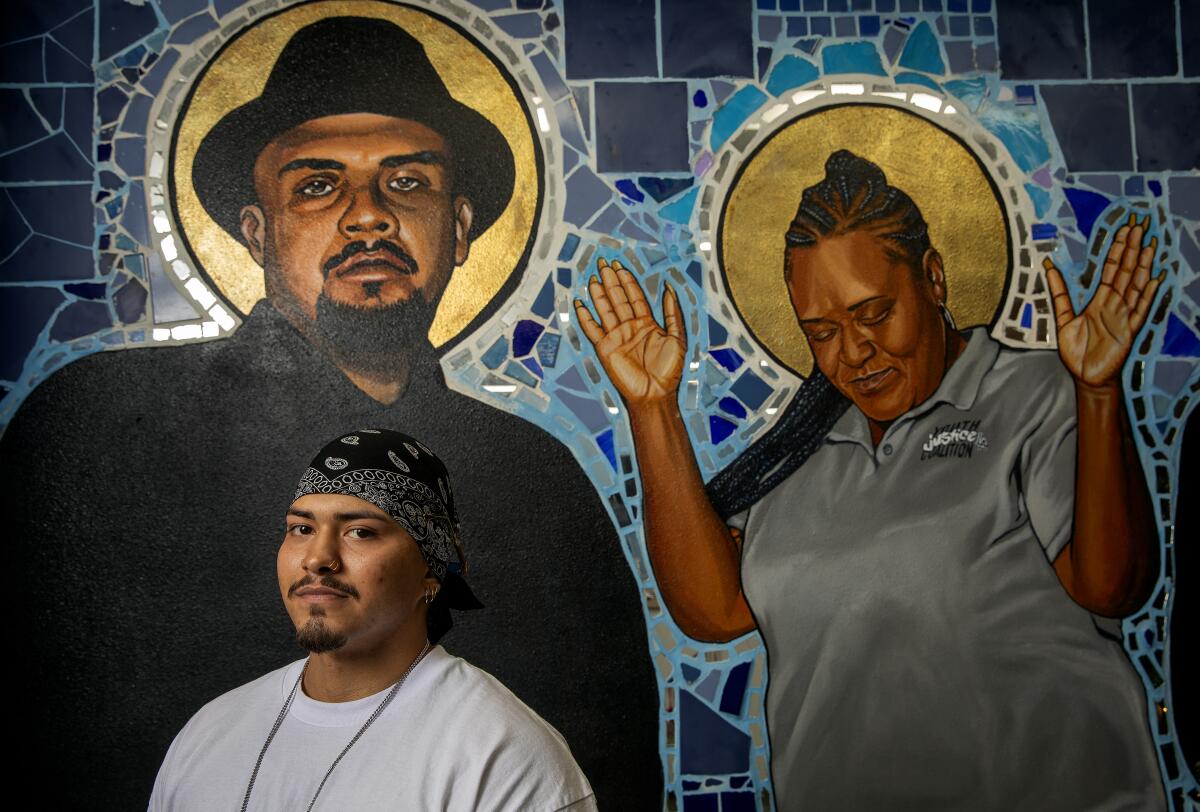
- Share via
Fernando Torres got his first gang tattoo when he was 15, a rite of passage among some members of his family. “I thought it was an honor to die for your gang,” he says.
Acknowledging that he was quick to throw a punch, he says that he was soon expelled from high school. But two years later, Torres, then 17, was enrolled at FREE L.A. High, a charter school affiliated with decarceration activists at the Los Angeles-based Youth Justice Coalition.
It wasn’t a smooth transition. It took an arrest for carrying a loaded handgun and the threat of prison time, he says, before he finally started to listen to FREE L.A. teachers and staff — several of whom had been incarcerated — and extracted himself from gang life.
“They see themselves in us,” says Torres, who is now 22 and works in construction, “and want us to have a better outcome.”
For 20 years, young people like Torres have had their lives turned around by the Youth Justice Coalition — an organization that relies on support from California philanthropies. The key to that success has been no-strings-attached grants, says Emilio Zapién, the coalition’s director of communications.
How some foundations get philanthropic dollars inside L.A. County bureaucracy
“It has been a heavy lift,” Zapién says.
Over the last decade, more and more of L.A.’s institutional foundations have gotten behind that idea: trusting nonprofits with increasing amounts of money, with fewer restrictions. The trend accelerated during the pandemic.
The Youth Justice Coalition is one of dozens of community organizations to benefit from what the leaders of these foundations say is a collective effort to support those closest to the problems the foundations hope to solve.
According to the foundations involved in this effort, L.A. County nonprofits received at least $476.2 million in grants in 2021, compared with at least $282.1 million in 2017.
This more generous approach has allowed the Youth Justice Coalition to “strengthen” staff and support services at FREE L.A., where 66 students are now enrolled, Zapién says.

The coalition reported $2.5 million in contributions for fiscal year 2021, up from $1.9 million a year earlier, and $1.2 million in fiscal year 2019. Contributions came from the Roy + Patricia Disney Family Foundation and Liberty Hill Foundation, among other organizations.
Zapién and other nonprofit activists are quick to say that local philanthropists need to give more with even fewer restrictions. But they agree that the era of L.A.’s leading philanthropists dictating what is best for all Angelenos is fading.
The need to move money quickly to disadvantaged communities during the pandemic accelerated this movement, according to the nonprofit community groups, philanthropic foundations and government agencies interviewed for this story.
“Our landscape is ever-changing,” Zapién says. “Our funding has to be general operating support. Our funders have to trust us.”
::
For decades, Southern California’s wealthy business leaders burnished their reputations by creating charitable foundations, which built glitzy theaters, high-ceilinged concert halls, and museums showcasing their donors’ art collections. Local hospital wings and university buildings bear their names.
In 1937 James Irvine stashed a chunk of the wealth from his 110,000-acre real estate empire in the James Irvine Foundation. Hotelier Conrad N. Hilton launched his foundation in 1944. Insurance and banking mogul Howard F. Ahmanson and real estate tycoon Ben Weingart each created one in the 1950s. Engineering pioneer Ralph M. Parsons started his in 1961, and Walter H. Annenberg established his in 1989.
Those campaigns funding brick-and-mortar civic institutions still dominated local philanthropy in 1999 when Fred Ali, who had recently run Hollywood’s Covenant House, which serves homeless youth, was named president of the Weingart Foundation.
It was passionless, Ali says.
It’s easier for a leader of an endowed foundation with money in the bank to shift funding priorities if they have the support of their board of directors. With an “aging, all-white” board, Ali says, he started early in his tenure to replace retiring members with people aligned with his progressive vision.
Can homelessness in L.A. ever be ‘rare, brief and nonrecurring’?
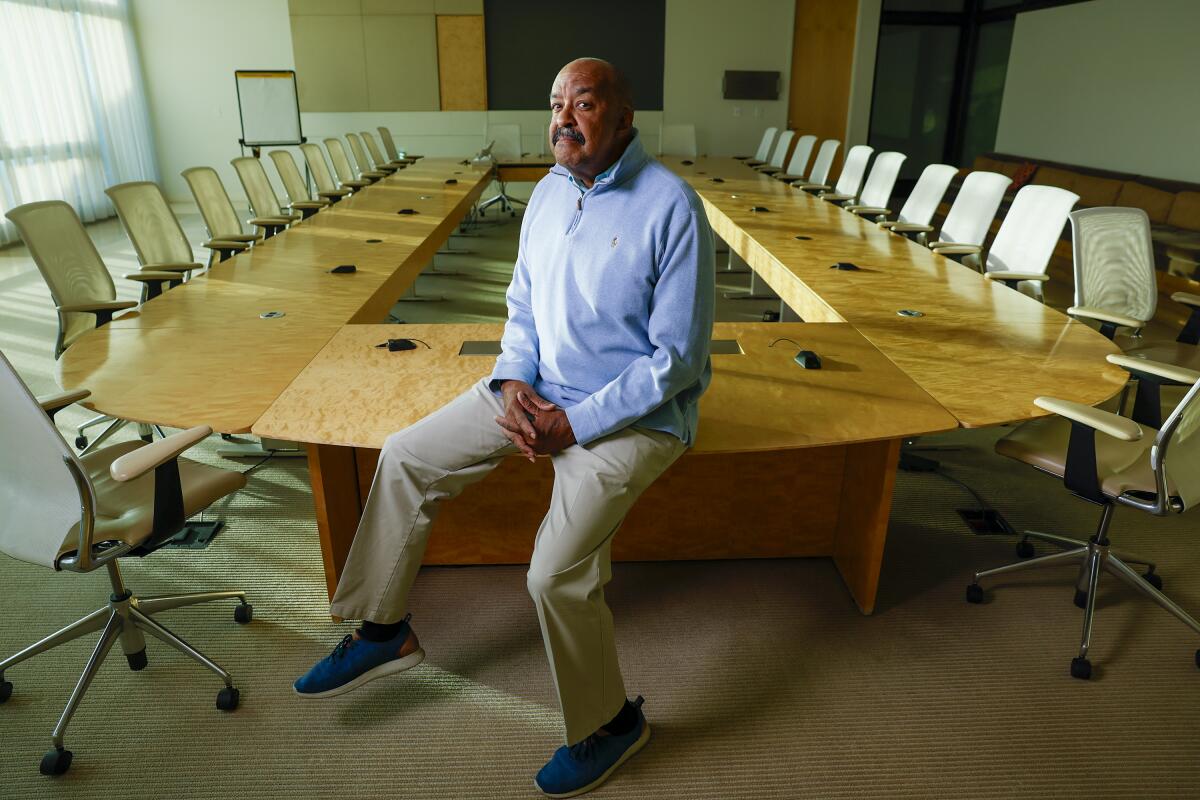
A year later, Robert Ross, a doctor trained in public health, arrived in L.A. as president and chief executive of the California Endowment, then a young multibillion-dollar statewide health foundation. During his first decade at the foundation, Ross says, he worked hard to “alleviate misery with charity.” One project he championed was the Children’s Health Initiative, a program delivering healthcare to a limited, underserved population.
Then he changed course.
“Poor Black and brown folks are at the short end of health disparities,” says Ross, “which tells you what we’re dealing with is structural. It’s systemic. It’s not bad luck.”
In 2010 he shifted millions of dollars from the health initiative and started funding advocacy efforts by several nonprofits that, by 2021, permanently expanded Medi-Cal eligibility to a broad underserved population across the state.
Where Ross had initially directed California Endowment funding to individual mental health programs within a cohort of local-level probation departments, he shifted those funds to community-led advocacy groups that secured public funding for similar mental health services.
The pivot started, Ross says, when he began to collaborate with Liberty Hill Foundation, which introduced him to community activists in L.A. who were working to empower poor people of color.
“People who are most impacted by problems know best how to fix them,” says Shane Goldsmith, president and CEO of Liberty Hill.
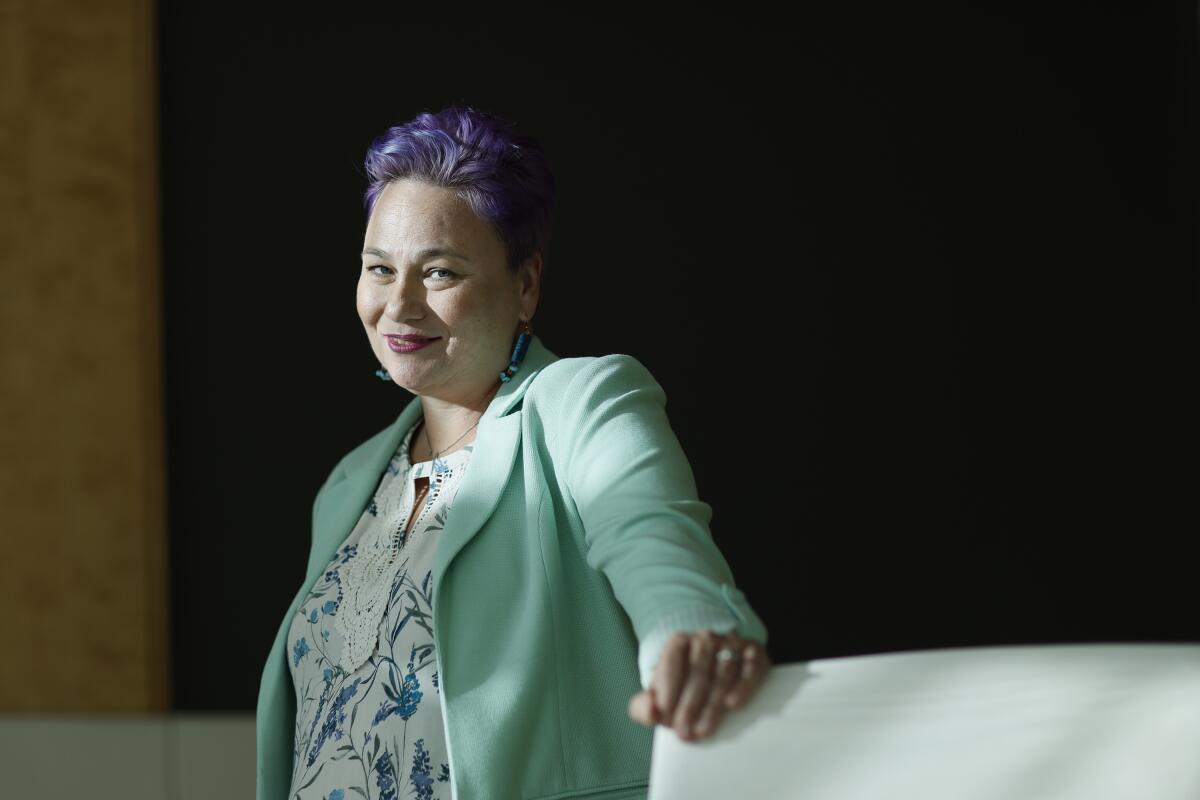
In 2013, Liberty Hill began funding STAND-L.A., a coalition of seven community groups — led by Communities for a Better Environment and Physicians for Social Responsibility — demanding an end to neighborhood oil and gas drilling. It took 10 years and $4.5 million in philanthropic funding, but in 2022, Goldsmith says, city and county governments agreed to ban new drilling and phase out the operation of existing wells across the county.
The community groups identified the wells, tracked the health effects and worked with regulators on the solutions, Goldsmith says. She calls these grassroots coalitions “our next generation of community leaders.”
When Antonia Hernández was named president and CEO of the California Community Foundation in 2004, it was a conservative “don’t rock the boat” organization, she says. And it was struggling to survive.
But she figured the organization wanted to become a more progressive funder; after all, they’d hired her — an activist attorney with the Mexican American Legal Defense and Educational Fund — to run the show.
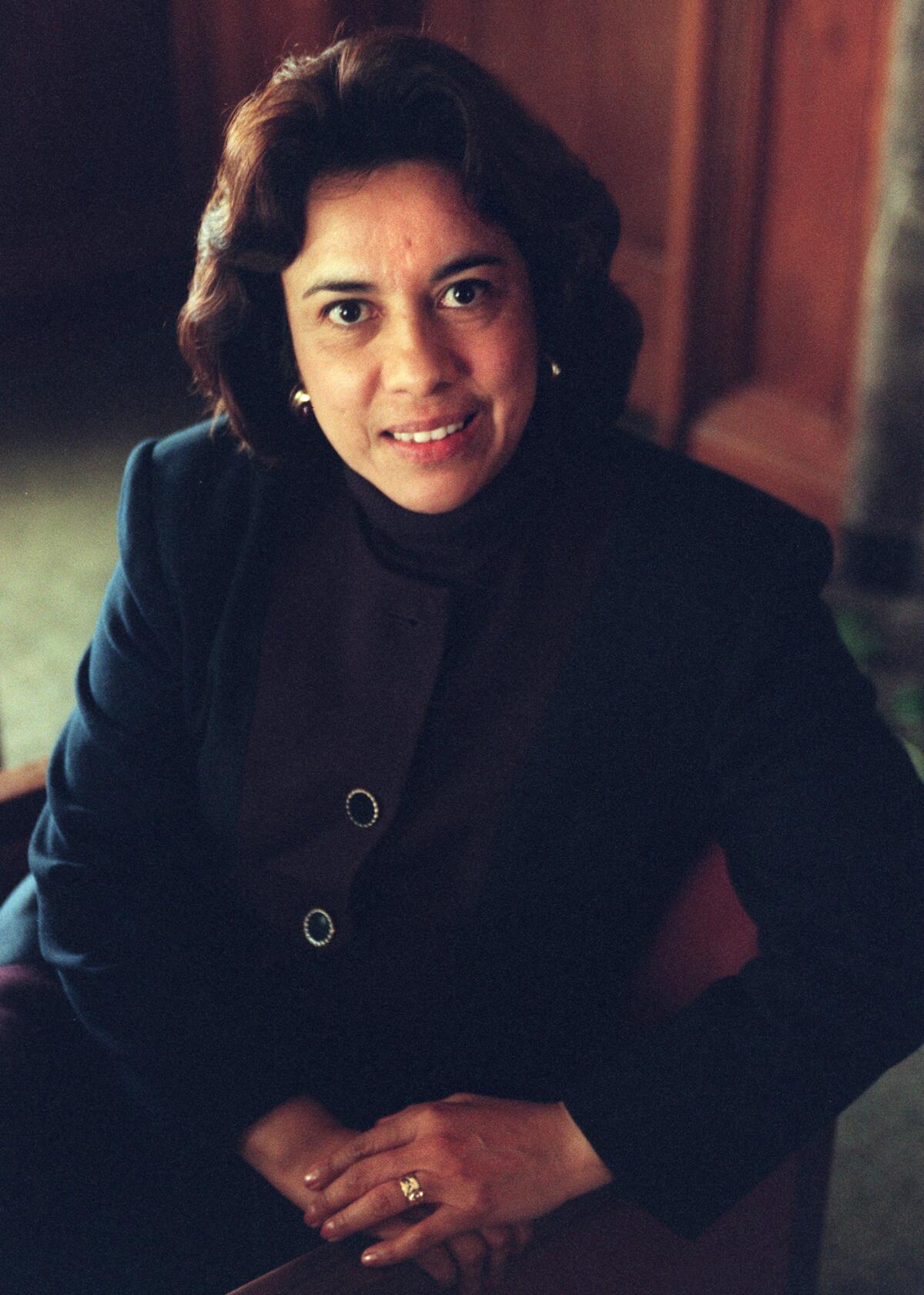
Hernández transformed the foundation into a progressive powerhouse by cultivating new donors among the wealthy social activists she’d met through the Mexican American fund. “I wanted donors interested in serving the vulnerable, giving voice to the poor,” she says.
In less than 20 years, the California Community Foundation went from $540 million to $2.3 billion in assets. It gives money directly to dozens of groups supporting marginalized communities, including the South Asian Network, Filipino Migrant Center and African Communities Public Health Coalition. And through countywide collective philanthropic initiatives supporting education, Black empowerment and the arts, the foundation funds hundreds more groups.
Ali, Ross, Goldsmith, Hernández and Judy Belk, then president and CEO at the California Wellness Foundation, formed a new progressive core within L.A.’s philanthropic ecosystem. In 2014, Don Howard became president and CEO of the James Irvine Foundation and joined their ranks.
The Annenberg Foundation is well-known for the institutions that bear its name, and President and CEO Wallis Annenberg has supported progressive initiatives, particularly in food equity, and has expanded her giving to include efforts by these foundation leaders.
These philanthropists are following national trends. But observers say they stand out for having turned their organizations around quickly, thoroughly and collectively.
L.A.’s leading philanthropic foundations have “transformed” themselves, says Aaron Dorfman, executive director of the National Committee for Responsive Philanthropy. These formerly tradition-bound charitable institutions have become “national leaders in their commitment to equity and justice,” he says.
Institutional foundations in New York City and the San Francisco Bay Area are far wealthier, according to Dorfman. They can, and do, dedicate more resources to fighting injustice. But L.A.’s leading foundations dedicate a greater share of their resources to that fight, he says, adding that “it has become a consistent theme in L.A., a steady beat,” in recent years.
Whether this transformation continues depends on the foundation boards — Ross, Belk and Hernández recently announced their retirements. The foundation boards are picking their successors.
Ali retired in 2021 and was succeeded as president and CEO by Miguel Santana, a longtime L.A. civic servant who continued Ali’s efforts to use all of the foundation’s assets, including its endowment, to redress the racist redlining practices that were once endemic within L.A.’s real estate industry.
“We think about all of our assets as vehicles to advance racial and social justice,” says Santana, who estimates Weingart is a third of the way toward moving its entire endowment into mission-aligned investments.
Weingart recently invested $5 million in Primestor, a Latino-owned real estate developer based in Culver City that invests in historically ignored communities of color; $5 million in the Female Founders Fund, which invests in women‘s entrepreneurial ventures; and $500,000 in iimpact capital, a Latina-owned real estate investment firm based in El Segundo that invests in affordable-housing developers owned by women.
To help guide this “truth and reconciliation” effort, Santana hired Edgar Villanueva, author of “Decolonizing Wealth,” an indictment of old-school American philanthropy. “Coming to terms with that history,” says Villanueva, “grieving that, apologizing for it,” sets the stage for “reparations to repair the harm caused by that history.”
Apparently this impressed the California Community Foundation’s board. In October, they poached Santana to replace Hernández.
::
Eli Broad, who died in 2021, was one of L.A.’s leading philanthropists for decades — a holdover from a generation of business leaders who believed they knew what was best for the city. In addition to building the Broad, a museum to house his art collection, he helped bring the Museum of Contemporary Art and Walt Disney Concert Hall into existence.
He was also a driving force in private efforts to enhance public education, leading a coalition of billionaires — Bill Gates, Reed Hastings and others — whose ultra-wealthy foundations pushed charter schools as a singular solution to bring about some much-needed changes to public schools in Los Angeles.
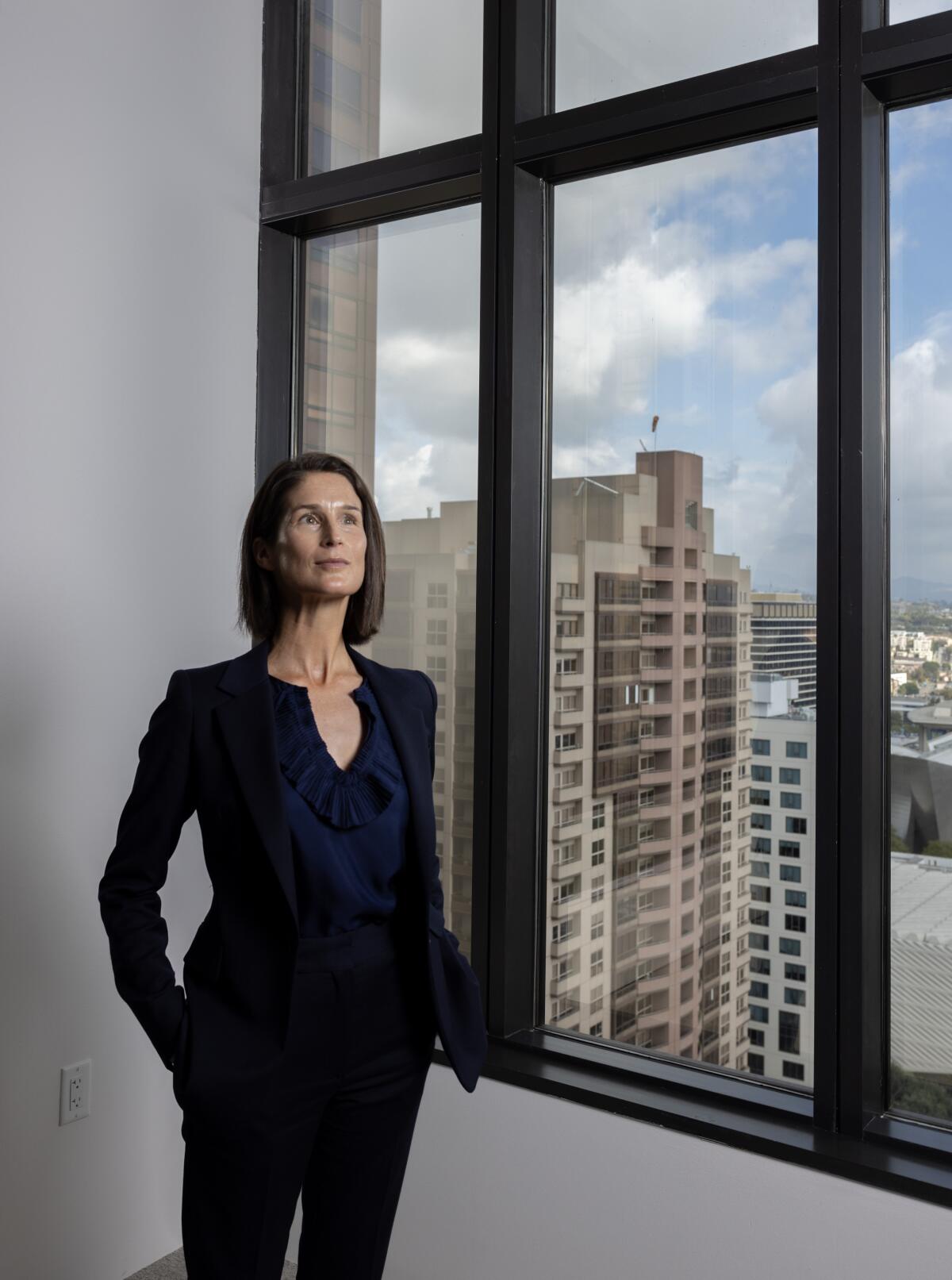
Broad’s “impatient” style foreclosed any easy avenues to collaboration with the community he believed he was serving, says Gerun Riley, president of the Eli and Edythe Broad Foundation. Parents and teachers loyal to their existing schools often felt voiceless and powerless in the ensuing political maelstrom.
At the start of Riley’s tenure as president, three years before Broad’s death, she urged him to change his approach. Her suggestion: Ask local families what they want from their public schools. Broad had never, nor would he ever, do such a thing, Riley says. So she did it for him.
“I set up a listening tour. I met with over 300 people, drove 600 miles,” she says. Parents expressed “frustration, exasperation.” They told her the battle over charter schools was “an ugly, unnecessary debate.” And they were clear about what they wanted for their children, she says: preparation for jobs in a technology-driven economy.
With Broad’s blessing, Riley says, the foundation is expanding beyond directly funding traditional K-12 education. It stopped using high school graduation rates as a measure of the success of its programs, she says.
The Broad Foundation’s new approach focuses on out-of-school enrichment programs, support for science, technology, engineering and math education, and workforce training to “advance social and economic mobility for students from historically marginalized and underrepresented communities,” Riley says.
She points to the foundation’s Expanded Learning Alliance, or ExpandLA, which aspires to bring public schools, after-school program providers and government and philanthropic funders together to create a countywide network of opportunities for students. The foundation established ExpandLA, still in its formative phase, as an independent nonprofit with an initial $5-million grant in 2020.
Separately, the Broad Foundation is supporting groups that provide services under the ExpandLA umbrella, including DIY Girls, a Latina-focused science, technology, engineering, art and math program in northeast San Fernando Valley ($584,650 over five years), and the Hidden Genius Project, an Inglewood-based computer science and entrepreneurship program for Black male high school students ($310,000 over five years).
Today, “L.A.’s core progressive foundations consider Broad in league with their efforts to strengthen community-based organizations,” says Christine Essel, president and CEO of Southern California Grantmakers, an association of philanthropists whose progressive leadership tripled membership during this transformative decade.
The Broad Foundation’s endowment is $1.8 billion — but, Riley says, it’s “not set up to exist in perpetuity.” The plan is to give it all away over the coming decades.
As it plans to clear out its coffers, it is worth noting that the Broad Foundation sets itself apart from L.A.’s core progressive foundations in one important way: It funds advocacy, but it does not fund activists, according to staff.
It’s a distinction some other L.A. philanthropists also make. Both activists and advocates seek to influence public policies. But Los Angeles foundations define advocacy as something that typically happens behind the scenes. Activists take it to the streets, foundations say, with overt political agendas.
(The $1.2-billion Ahmanson Foundation is one leading L.A.-centric foundation that does not participate in philanthropic efforts to influence public policy. President and CEO Bill Ahmanson has distanced his foundation from this progressive movement.)
Like Broad, the Hilton and Parsons foundations support advocacy to change public systems, but they do not fund activism.
L.A.’s newest philanthropic force — former Microsoft CEO Steve Ballmer and his wife, Connie — are also in this camp, according to Nina Revoyr, Ballmer Group’s L.A. executive director.
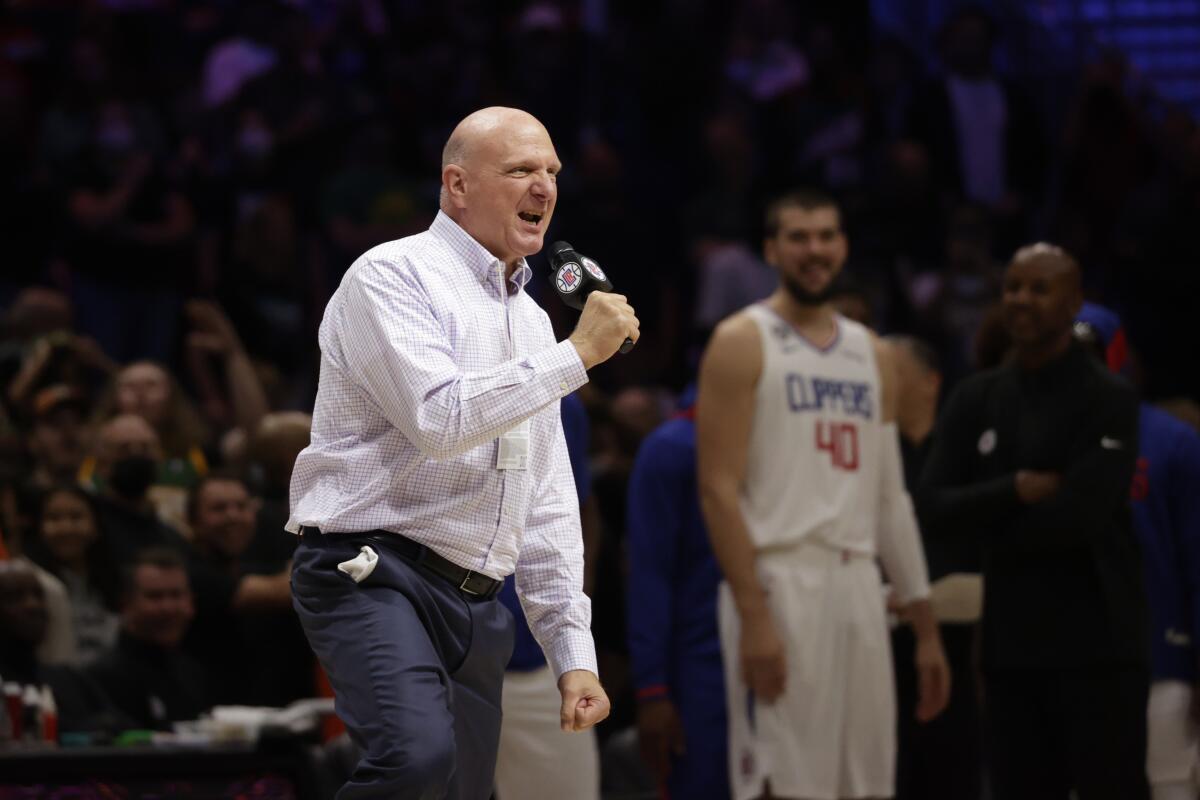
With a personal fortune that Forbes estimates is in excess of $100 billion, the Ballmers, who reside in the Seattle area, started their Los Angeles County philanthropic work in 2016, two years after buying the L.A. Clippers.
So far this year, Ballmer Group has committed $115 million to nonprofits in L.A. County, compared with $55 million in grants last year. Much of this year’s increase is associated with a $39.2-million commitment to early childhood education workforce support, including scholarships and training.
Among their many early childhood education grantees is Crystal Stairs, a nonprofit receiving $1.3 million over three years to provide child-care services, research and advocacy tailored to Black educators.
Ballmer recently announced a $24-million multiyear commitment to 170 Boys & Girls Club sites in Los Angeles County, an increase from their previous $2 million in multiyear grants to the clubs. South L.A.’s Brotherhood Crusade received a $2.3-million commitment.
::
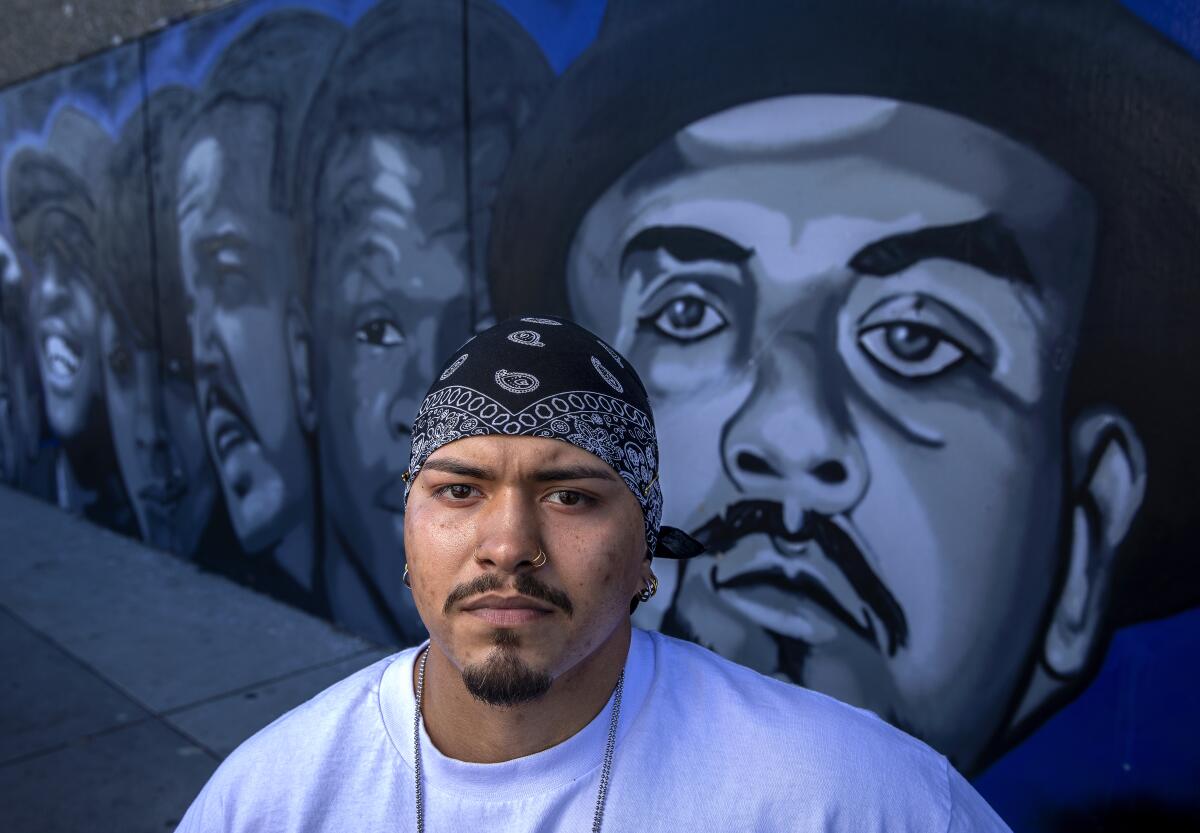
Before it was home to FREE L.A. High School, the Youth Justice Coalition’s 35,000 square-foot building on South Central Avenue was a juvenile court. The courtrooms now are classrooms and the dank holding cells are open to the community as places to pay respect to friends and family who have been or remain incarcerated.
Coalition staff worked with Torres’ court-appointed attorney to create a diversion program: If Torres could graduate from high school and complete 40 hours of community service, he would do no prison time.
In his spare time now he draws portraits, Torres says, flipping through phone photos of a dozen pencil and crayon drawings of young women of color. His gang tattoos are in the process of being removed.
“Seeing the cells motivates me,” Torres says. “I don’t want to be in a box. I want to be free.”
Among the Youth Justice Coalition’s supporters is the California Black Freedom Fund, a collective statewide philanthropic response to the 2020 police murder of George Floyd initiated by the Silicon Valley Community Foundation. The fund’s goal is to get $100 million in unrestricted funds into Black-led community groups.
The fund’s L.A.-focused contributors include the Irvine, Weingart, Annenberg, Liberty Hill and Hilton foundations, the California Community and California Wellness foundations and the California Endowment.
The Black Freedom Fund’s ambitious goal recently expanded, says Marc Philpart, its executive director. His backers are pushing the state to match their $100-million commitment and turn the fund into an endowed foundation that survives long into the future.
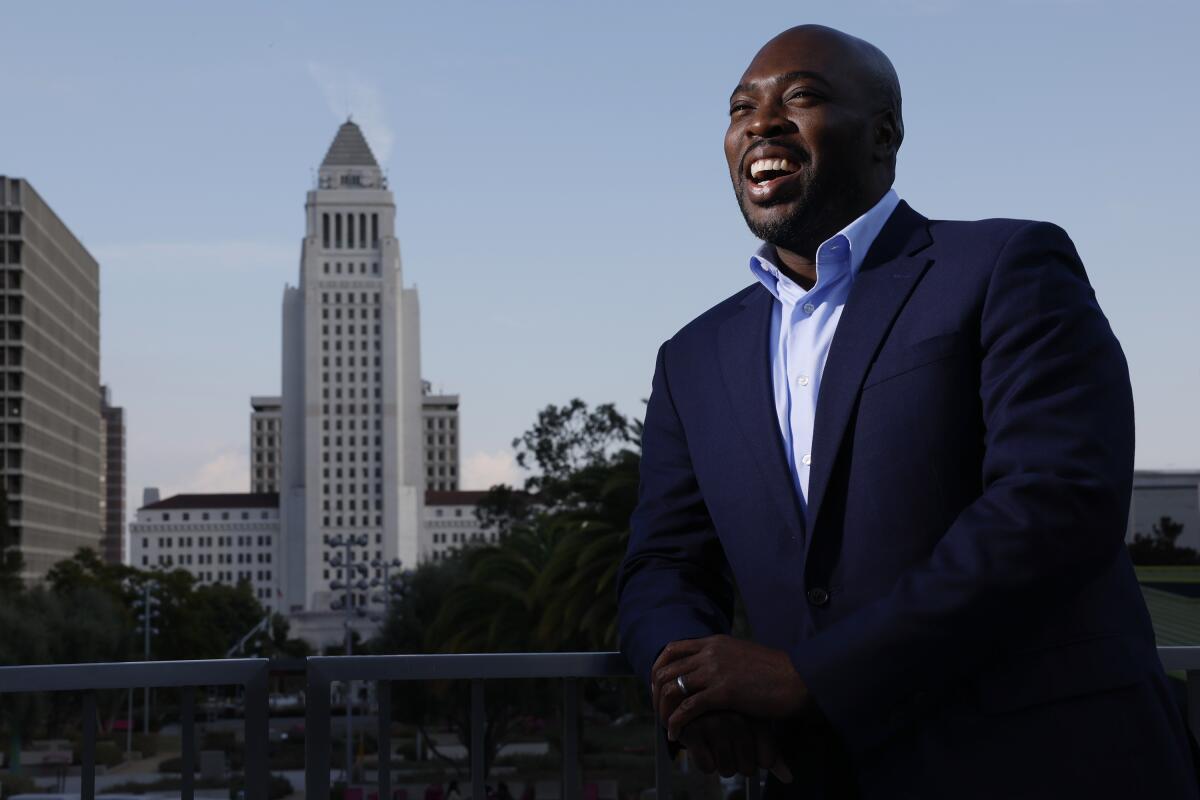
“We want to establish a long-term, sustained approach to racial equity, racial justice,” says Philpart.
Gov. Gavin Newsom has agreed to an initial investment of $3.5 million, nudging the project forward, according to Philpart.
In addition to the Youth Justice Coalition, which has received $200,000, other nonprofit beneficiaries of the Black Freedom Fund include the Afrikan Black Coalition ($100,000), the Los Angeles Black Worker Center ($500,000) and the Los Angeles Community Action Network ($350,000).
Howard, of the Irvine Foundation, says California has a long history of erecting legal and structural barriers that block Black people and members of other marginalized groups from jobs, healthcare and housing, and each community faces different barriers.
“We need to understand how to dismantle those barriers,” he says. “If we’re going to transform society, everyone has to have a seat at the table.”
“There’s a sea shift in who has power in California,” says John Kim, president and CEO of Catalyst California, which advocates for racial justice and whose revenue has doubled in recent years. “Money is power, and the foundations are giving it directly to people of color.”
Community groups have used that power to make “real gains” in L.A. County and city budget allocations, Kim says.
But “after 170 years of exclusion and extraction, it’s just one decade of progress,” he adds. “L.A. has a long way to go.”
More to Read
Sign up for Essential California
The most important California stories and recommendations in your inbox every morning.
You may occasionally receive promotional content from the Los Angeles Times.










